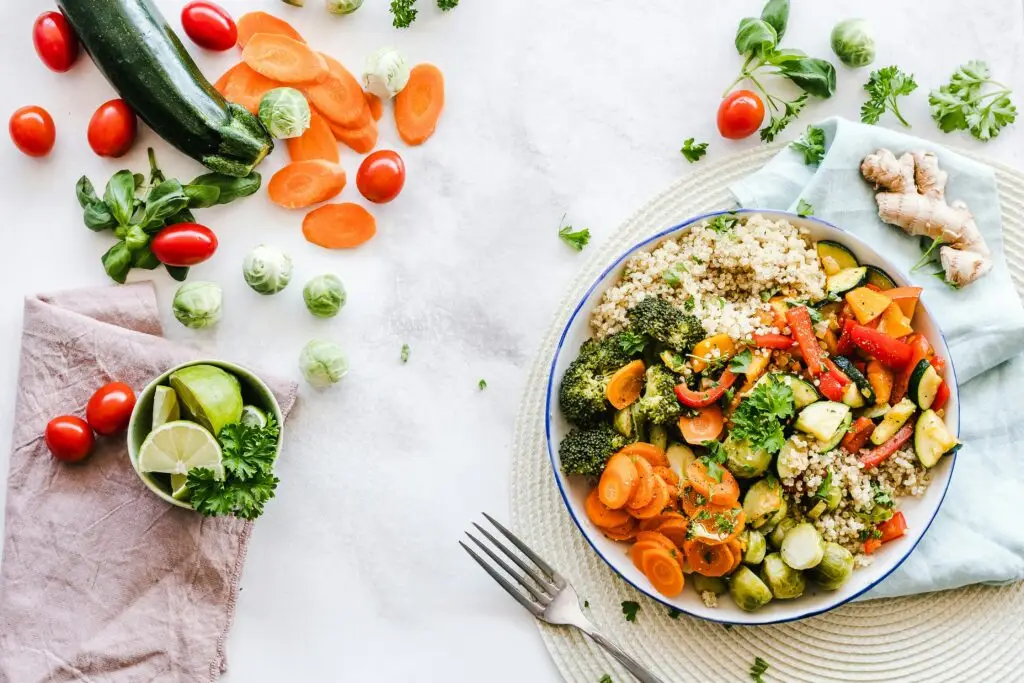Revolutionize Your Oral Care with the Soocas Neos 2
Discover the 2-in-1 Electric Toothbrush and Water Flosser That’s Changing the Way We Clean Our Teeth
A New Era in Dental Hygiene
Oral hygiene is more than just a routine—it’s a fundamental part of overall health. Traditional toothbrushes, while a staple for centuries, often fall short when it comes to thorough cleaning.
Studies and everyday experiences reveal that conventional brushing reaches only about 60% of the mouth’s surfaces, leaving the remaining 40% prone to plaque buildup, tartar formation, and eventual dental issues.
Imagine gifting your loved ones (or even yourself) a solution that goes beyond the limitations of old toothbrushes. The Soocas Neos 2 is not just an electric toothbrush; it’s a revolutionary 2-in-1 device that combines advanced brushing with precision water flossing.
This innovative tool offers a complete cleaning solution designed to meet the needs of modern lifestyles, ensuring that every nook and cranny of your mouth receives the care it deserves.
Get your neos 2, a two-in-one electric toothbrush and water flosser.
The Limitations of Traditional Brushing
Have you ever noticed worn-out toothbrushes with frayed bristles that barely clean? For many families, especially for our parents or seniors, conventional toothbrushes can be both inefficient and harmful.
The reality is that most manual or even basic electric toothbrushes fail to clean those hard-to-reach spaces where food particles and bacteria gather.
- Inadequate Cleaning:
Traditional brushing only addresses the outer surfaces of the teeth, leaving between the teeth and along the gumline less thoroughly cleaned. - Risk of Gum Damage:
Brushing too hard—a common misconception for better cleaning—can actually injure sensitive gums and exacerbate oral problems. - Complexity in Oral Care:
Many people resort to using separate water flossers to clean interdental spaces, which is inconvenient and adds extra steps to the daily routine.
The Soocas Neos 2 addresses all these shortcomings by combining the best aspects of both brushing and flossing into a single, streamlined device.
Introducing the Soocas Neos 2: Advanced Oral Care Redefined.
The Soocas Neos 2 is engineered to provide a deep, yet gentle cleaning experience. Its dual-functionality is what sets it apart from other products on the market, ensuring that your oral hygiene routine is as efficient as it is effective.
Here’s what makes the Neos 2 a must-have:
Dual-Action Cleaning
Unlike conventional methods that require separate tools for brushing and flossing, the Neos 2 integrates both into one seamless routine.
With a dedicated 2-minute brushing session followed by a 1-minute water floss, this device ensures a comprehensive clean that addresses every area in your mouth.
- High-Frequency Vibrations:
Operating at impressive speeds, the toothbrush vibrates at high frequencies that help dislodge plaque and debris from the surface of your teeth. - Ultra-Fine Water Jet:
The integrated water flosser features a 0.6mm ultra-fine water stream that penetrates the narrow gaps between teeth. - This feature reaches areas that brushing alone cannot, providing a thorough cleaning along the gumline.
Simple, User-Friendly Design
The Neos 2 is designed with ease of use in mind. With preset modes and straightforward operation, even those unfamiliar with advanced dental care devices can enjoy its benefits.
- Preset Cleaning Modes:
A simple press of a button engages the deep clean mode—combining a two-minute brushing session with a one-minute flossing routine. This ensures you never miss out on a crucial step in your oral care. - Quick Clean for Busy Days:
For those moments when time is short, a quick clean mode offers simultaneous brushing and flossing, providing a safe and efficient clean in just 60 seconds.
Innovative Wireless Charging and Long Battery Life.
Charging your dental care device should be hassle-free. The Neos 2 uses a cutting-edge wireless magnetic charging system that not only simplifies the process but also helps prevent the dirt and stains common with other charging methods.
With up to 30 days of battery life on a full charge, this toothbrush is perfect for daily use at home or on the go.
- Magnetic Induction Charging:
Simply snap the provided charger onto the device—no cords, no sockets, just a smooth and efficient power-up. - Travel-Ready:
Thanks to its long-lasting battery and compact design, the Neos 2 is an ideal companion for business trips and vacations. Leave your charger at home and enjoy a full month of use without interruption.
How the Soocas Neos 2 Works: Technology Behind the Clean
Let’s dive into the mechanics behind this innovative device. The Neos 2 is a masterpiece of engineering, combining modern technology with practical design elements that make daily oral care effortless.
The Multi-Clean Approach
At the heart of the Neos 2 is the Multi-Clean concept, which doesn’t simply combine two cleaning methods—it enhances them.
- Two-Minute Brushing Cycle:
The device is programmed for a two-minute brushing session, ensuring that every surface of your teeth is covered. The high-frequency vibrations dislodge plaque effectively without being too harsh on your gums. - One-Minute Flossing Cycle:
Immediately following the brushing phase, the water flosser takes over for a full minute. The ultra-fine water jets target the spaces between your teeth, flushing out debris that a brush alone would miss.
Precision Design and Pump Technology
The engineering behind the Neos 2 focuses on precision and efficiency. The brush head is designed to draw in water and channel it through a compact yet powerful pump motor.
This pump, combined with sonic vibrations, creates a burst of water that cleans not only the surface of your teeth but also the hard-to-reach interdental spaces.
- Optimized Water Flow:
The water is forced through the brush head in a controlled manner, ensuring it reaches deep into the gaps without causing discomfort. - Sonic Vibration Integration:
High-frequency oscillations enhance the cleaning effect by gently massaging the gums, promoting healthy circulation and reducing inflammation.
Advantages Over Conventional Brushing Methods
One of the most compelling aspects of the Neos 2 is how it outperforms traditional oral care tools. Here’s why it stands head and shoulders above conventional toothbrushes:
Superior Cleaning Efficiency
Regular brushing, even with electric toothbrushes, often leaves about 40% of your mouth unclean. This can lead to plaque buildup and, eventually, dental issues such as bad breath, gum disease, and tooth decay.
The Neos 2’s dual-action design ensures that every part of your mouth gets the attention it deserves.
- Enhanced Plaque Removal:
The combination of high-frequency vibrations and the ultra-fine water jet ensures up to 35 times more effective stain removal compared to standard brushes. - Comprehensive Coverage:
By integrating flossing into the brushing routine, the Neos 2 eliminates the need for multiple devices, reducing the risk of missing critical cleaning steps.
Gentle Yet Effective
Many traditional toothbrushes can be overly abrasive, causing discomfort and even damage to the gums. With the Neos 2, the focus is on delivering a deep clean without sacrificing gentleness.
- Safe for Sensitive Gums:
The calibrated water stream and controlled vibrations ensure that even those with sensitive gums can use the device without worry. - Ergonomic Design:
The sleek design is not only visually appealing but also ergonomically friendly, making it easy to handle for users of all ages.
Time-Saving and Convenient
One of the most significant barriers to proper oral care is time. Switching between a toothbrush and a separate water flosser can disrupt your routine, leading to skipped steps.
The Neos 2 solves this problem by combining both functions into one efficient process.
- No Device Switching:
With its integrated design, you can transition seamlessly from brushing to flossing with the touch of a button. - Preset Modes for Effortless Operation:
Whether you’re in a rush or have a few extra minutes, the device offers modes that fit your schedule without compromising on quality.
Easy to Use: A Step-by-Step Guide
Using the Neos 2 is straightforward, even for those who aren’t tech-savvy. Here’s a simple guide to getting started:
- Prepare the Device:
Remove the water reservoir cap on the back and fill it with clean water (or diluted mouthwash for added freshness).Add Toothpaste:
Apply your favorite toothpaste to the brush head. The Neos 2 is compatible with most toothpaste brands, so choose one that suits your needs. - Select Your Mode:
For a standard deep clean, simply press the deep clean mode button. The device will automatically initiate a two-minute brushing cycle, followed by a one-minute flossing session. - Quick Clean for On-the-Go:
If you’re short on time, use the quick clean mode, which delivers a 60-second simultaneous brushing and flossing routine.
Note: The quick clean mode is designed for safety—there’s a three-second pause before the cleaning begins, giving you time to prepare. - Wireless Charging:
Once you’re done, place the Neos 2 on its magnetic induction charger. In just a few moments, your device will be fully powered up and ready for your next use. - Maintenance:
Clean the brush head and water reservoir regularly to ensure optimal performance. The simple design makes it easy to keep your device in top condition.
What are the Common Concerns?
When it comes to advanced oral care, some people may have reservations. Here we address a few common concerns:
Is It Really More Effective Than Traditional Methods?
Yes. Conventional brushing and flossing routines often leave gaps that allow plaque to accumulate. The Neos 2’s integrated design—combining high-frequency sonic vibrations with an ultra-fine water jet—ensures a comprehensive clean that reaches those missed areas.
Will It Hurt My Gums?
The Neos 2 is engineered to be gentle yet effective. Its calibrated cleaning cycles are designed to massage the gums gently, reducing inflammation and promoting better blood circulation without causing any discomfort.
Is It Complicated to Use?
Not at all. With preset modes and an intuitive design, the Neos 2 is user-friendly. Whether you’re a seasoned user of advanced gadgets or new to electric toothbrushes, you’ll find that this device fits seamlessly into your routine.
What About Battery Life and Charging?
One of the standout features of the Neos 2 is its long battery life—up to 30 days on a single charge. Its wireless magnetic charging system makes recharging simple and mess-free, ensuring your device is always ready to use.
Expert Recommendations for Superior Oral Health
While everyday consumers are the primary users of the Neos 2, the technology behind it is backed by years of dental research. Without directly citing experts, the principles behind this design have been widely endorsed by dental professionals worldwide.
The integrated dual-functionality helps prevent the onset of gum disease, tooth decay, and other oral health issues, making it a smart investment for anyone who cares about their smile.
Preventative Dental Care Made Easy
Maintaining optimal oral hygiene shouldn’t be a chore. With the Neos 2, you’re not just brushing your teeth—you’re investing in preventative care that can save you from costly dental procedures down the line.
The powerful combination of brushing and flossing ensures that plaque is effectively removed, reducing the risk of cavities and gum infections.
A Daily Ritual That Feels Like a Spa Treatment
Imagine starting and ending your day with a dental care routine that not only cleans your teeth but also provides a sense of luxury.
The gentle vibrations, precise water jets, and thoughtfully designed cleaning cycles transform a mundane task into a rejuvenating experience. In essence, the Neos 2 isn’t just a tool—it’s a lifestyle upgrade.
What Benefits have users of Neos 2 observed?
While we won’t name specific dental practices, feedback from users consistently highlights the transformational impact of the Neos 2. Here are some of the benefits regular consumers have experienced:
- Enhanced Oral Freshness:
Users report a noticeable improvement in breath freshness, with fewer instances of bad breath throughout the day. - Reduced Plaque and Tartar:
Consistent use of the device leads to a visible reduction in plaque buildup, making dental cleanings easier and less frequent. - Ease of Use:
The integration of brushing and flossing eliminates the hassle of juggling multiple devices, streamlining daily oral care. - Time Savings:
With a total cleaning time of just three minutes, the Neos 2 fits perfectly into busy lifestyles—no more rushing through a routine or skipping essential steps.
Why the Neos 2 Is a Smart Purchase.
It’s natural to be cautious when considering a new type of device, especially one that promises to change your daily routine. However, the advantages offered by the Neos 2 make it a worthwhile investment:
- All-in-One Convenience:
No need to switch between a toothbrush and a separate water flosser. This all-in-one design saves time, space, and hassle. - Cutting-Edge Technology:
With features like high-frequency sonic vibrations and an ultra-fine 0.6mm water jet, the Neos 2 provides a level of cleanliness that conventional methods simply can’t match. - Cost-Effective in the Long Run:
While the initial investment may be higher than a standard toothbrush, the benefits of improved oral health and reduced dental treatments make it a cost-effective solution over time. - Ideal for All Ages:
Whether it’s a thoughtful gift for aging parents or a smart choice for your own oral care, the Neos 2 adapts to the needs of users of all ages.
Final Thoughts: Transform Your Daily Routine
The Soocas Neos 2 isn’t just another gadget—it’s a paradigm shift in how we approach oral care.
By addressing the limitations of traditional brushing and flossing, this innovative device provides a thorough, efficient, and enjoyable cleaning experience that transforms your daily routine.
In today’s fast-paced world, where every minute counts, investing in a tool that enhances your health and saves time is not just smart—it’s essential.
With its advanced technology, user-friendly design, and proven effectiveness, the Neos 2 is poised to become an indispensable part of your oral hygiene regimen.
Invest in a Healthier Smile Today.
Why settle for outdated oral care methods when you can embrace the future?
The Soocas Neos 2 offers everything you need for a healthier, brighter smile—without the hassle of juggling multiple devices.
It’s time to upgrade your routine and experience the best in dental care.
Get it HERE.
Revolutionize Your Oral Care with the Soocas Neos 2 Read More »



